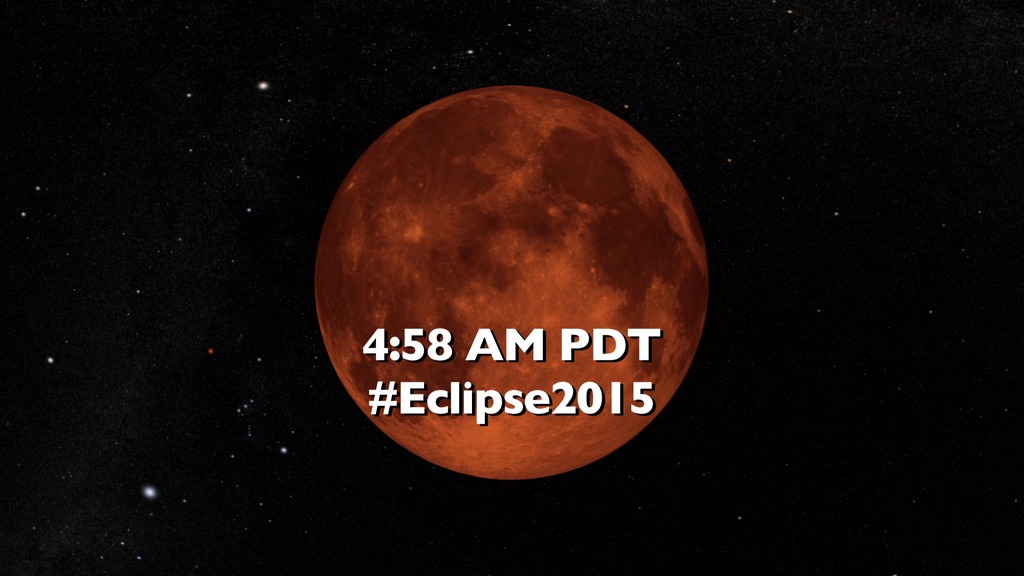Lunar Eclipse Essentials
When the moon passes through the Earth's shadow, it causes the moon to look very unusual for a short period of time. This event is called a lunar eclipse, and it occurs roughly twice a year. Learn more about how lunar eclipses work in this video!
These videos and animations are available in both standard formats as well as stereoscopic 3D for those who can view it. We've included left and right eye clips, a side-by-side version, and an anaglyph (red/blue) version of the narrated video, and left and right eye clips for each of the animations. The labels next to each link will help you pick!
NARRATED VIDEO (December 2011 eclipse): Learn more about how a lunar eclipse works by watching this video!
This version contains the correct times for viewing the December 2011 eclipse.
For complete transcript, click here.
NARRATED VIDEO: Learn more about how a lunar eclipse works by watching this video!
This version contains both the left and right videos for stereoscopic 3D presentations, and you can also download standard 2D versions! The labels next to each link will help you pick.
For complete transcript, click here.
NARRATED VIDEO - 3D SIDE-BY-SIDE: This version of the video is rendered in the side-by-side format used by some stereoscopic 3D displays.
NARRATED VIDEO - 3D ANAGLYPH (RED/BLUE): This version is in anaglyph (red/blue) and can be viewed in 3D using common red/blue 3D glasses. You may have a pair lying around at home!
ANIMATION - LUNAR ECLIPSE FEATURES: During a lunar eclipse, the moon passes through the Earth's shadow, which can be divided into two parts. When it passes through the penumbra, the moon only gets slightly darker. When it passes through the umbra, however, it darkens further and turns a deep red.
ANIMATION - PHASES OF THE MOON: Normally, the appearance of the moon changes based on where the moon is in its orbit. This cycle is called the phases of the moon!
ANIMATION - 2011 ECLIPSE SCHEDULE: This animation shows the viewing times for the June 15, 2011 lunar eclipse.
ANIMATION - LIGHT SCATTERED BY THE EARTH'S ATMOSPHERE: As light passes by the Earth's atmosphere, short wavelengths, like blue, are scattered. By the time light finishes its trip to the moon, only longer wavelengths, like red, remain. This is why the moon turns red during an eclipse! Credit goes to TheWusa from de.wikipedia.org for the illustration this animation is based on.
ANIMATION - LIGHT SCATTERING SEEN FROM THE MOON: The way that light is scattered by the Earth's atmosphere to turn the moon red during an eclipse is similar to how the sky turns red at sunset. Credit goes to TheWusa from de.wikipedia.org for the illustration this animation is based on.
ANIMATION - ECLIPSE VIEWED FROM EARTH: When you see an eclipse from Earth, the moon gets darker and turns a deep red before eventually returning to its normal color. The process can last anywhere from a few minutes to a few hours.
VISUALIZATION - PHASES OF THE MOON/LIBRATING MOON: As the moon moves through its phases, it can also appear to "dance" slightly. This is due to its position relative to the Earth.
ANIMATION - MOON AS IT MOVES THROUGH THE PENUMBRA: As the moon moves through the penumbra, it only darkens slightly.
ANIMATION - RED MOON: During a lunar eclipse, the moon turns red. This is due to light being scattered as it passes through the Earth's atmosphere!
Credits
Please give credit for this item to:
NASA/Goddard Space Flight Center Scientific Visualization Studio
-
Animators
- Chris Smith (HTSI)
- Ernie Wright (USRA)
-
Video editor
- Chris Smith (HTSI)
-
Narrator
- Chris Smith (HTSI)
-
Producer
- Chris Smith (HTSI)
-
Scientist
- Richard Vondrak (NASA/GSFC)
-
Writer
- Chris Smith (HTSI)
Release date
This page was originally published on Wednesday, June 8, 2011.
This page was last updated on Wednesday, May 3, 2023 at 1:53 PM EDT.
Missions
This page is related to the following missions:Series
This page can be found in the following series:Tapes
The media on this page originally appeared on the following tapes:-
Lunar Eclipse Essentials
(ID: 2011066)
Thursday, June 9, 2011 at 4:00AM
Produced by - Brendan Antiochos (NASA)



